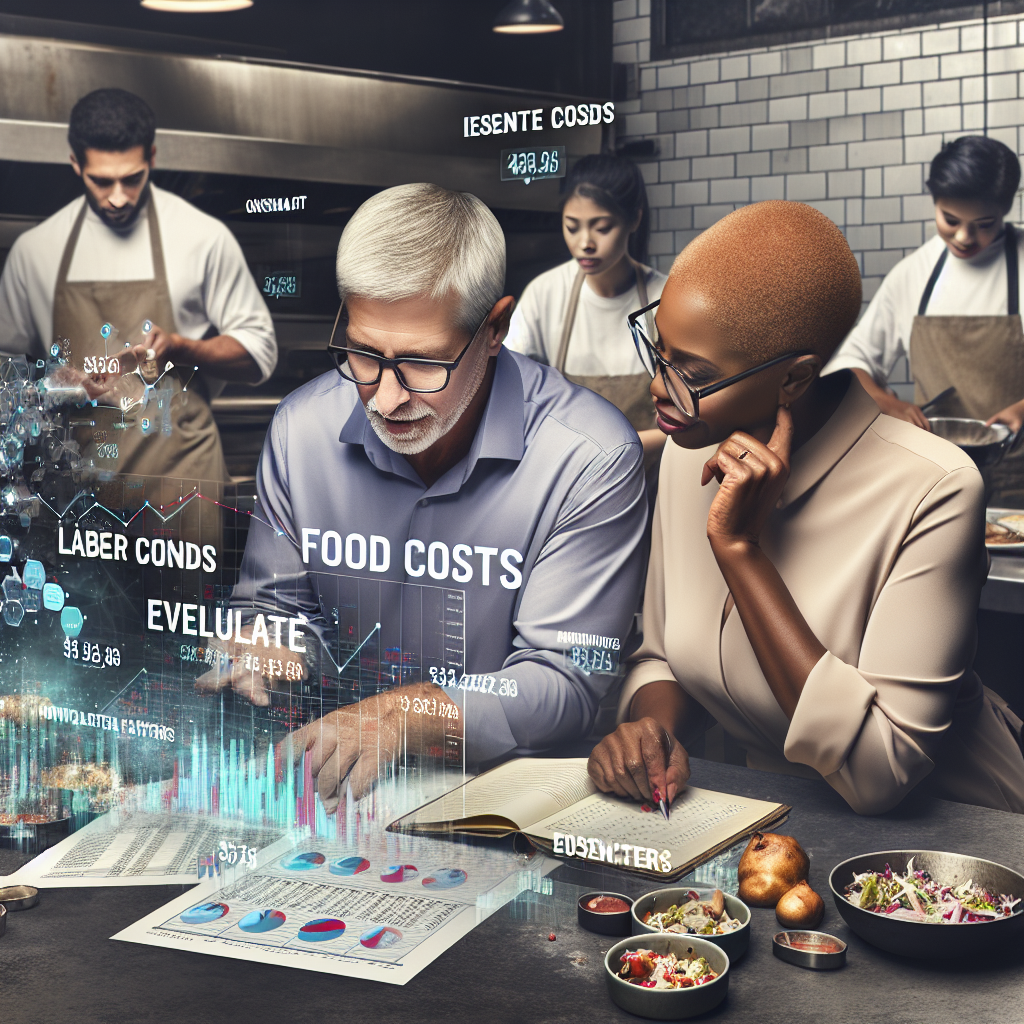Evaluate Restaurant Costs: Essential Tips for Success
To effectively manage a restaurant, one of the most crucial aspects you must focus on is how to evaluate restaurant costs. Understanding your costs is not just about keeping expenses in check; it’s about strategizing for profitability and long-term success in a competitive industry. With proper evaluation techniques, restaurant owners can gain valuable insights into operational efficiencies, set realistic pricing strategies, and maintain a sustainable business model. Here are some essential tips to help you navigate the complexities of restaurant costs.
Understand Key Cost Categories

When you set out to evaluate restaurant costs, it’s imperative to categorize all expenses. Restaurant costs generally fall into three main categories: food costs, labor costs, and overhead costs.
1. Food Costs: This includes all ingredients used in menu items. To effectively manage these costs, calculate the food cost percentage by dividing total food costs by total sales. Aim to keep this percentage within industry standards, usually between 20% to 30%.
2. Labor Costs: Payroll expenses, including wages, taxes, and benefits, form a significant portion of restaurant overhead. Monitoring labor costs also requires understanding labor productivity. Periodically reviewing staff efficiency can identify opportunities for training, reallocation, or even temporary staffing during peak hours.
3. Overhead Costs: These encompass all ongoing expenses that aren’t directly tied to producing food or delivery services. Examples include rent, utilities, and marketing. Regularly assessing these costs is crucial to maintain financial health.
Implement Cost Control Strategies
Once you’ve categorized your expenses, the next step in evaluating restaurant costs is to implement effective cost control strategies. Here are some actionable tactics to consider:
1. Menu Engineering
Menu engineering involves analyzing the profitability and popularity of your dishes. By using data, you can make informed decisions about which items to promote, adjust, or remove. A well-engineered menu not only highlights high-margin items but also strategically places them in prominent positions, encouraging customers to choose them.
2. Inventory Management
An optimized inventory management system is essential for controlling food costs. Track inventory levels closely to avoid overstocking, which can lead to spoilage and waste. Use inventory management software that provides real-time updates on stock levels, which can help you reorder supplies timely and minimize losses.
3. Energy Efficiency
Consider investing in energy-efficient appliances that can save you money over time. Not only do they reduce utility costs, but they might also enhance your sustainability initiatives, attracting eco-conscious customers.
Regular Reporting and Analysis
To evaluate restaurant costs effectively, create a system for regular reporting and analysis. Monthly or quarterly performance reviews can help you identify trends and anomalies in your expenses. Use tools such as profit-and-loss statements (P&Ls) and balance sheets to gain insights into your financial performance.
Key Metrics to Monitor
Focus on key performance indicators (KPIs) that play a significant role in evaluating your restaurant’s financial health:
– Cost of Goods Sold (COGS): This represents the direct costs attributable to the production of the meals sold in your restaurant.
– Labor Cost Ratio: This is calculated by dividing total labor costs by total revenue. Aim for a ratio that aligns with your business goals while ensuring adequate service levels.
– Break-even Analysis: Determine how much revenue is required to cover all of your costs. Understanding this will allow you to set achievable sales targets.
Engage Your Team
Remember that evaluating restaurant costs isn’t solely a numbers game. Engaging your team in the process can yield significant insights and foster a culture of cost awareness. Encourage your staff to share their observations on waste, inefficiencies, or customer preferences. Empowering your employees to think about cost management can lead to innovative solutions that benefit the entire restaurant.
Training and Awareness
Incorporate training sessions focused on cost management into your staff onboarding process. By instilling a mindset aware of costs, employees can actively contribute to reducing waste and enhancing service efficiency.
Final Thoughts
Evaluating restaurant costs is crucial for achieving financial sustainability and operational success. By categorizing costs, implementing control strategies, leveraging metrics, and engaging your team, you can foster a culture that prioritizes efficiency and profit. Understanding your financial landscape is an ongoing process that will require regular monitoring and adaptation. Keep your finger on the pulse of your restaurant’s costs, and you’ll pave the way for long-term success in this competitive field.


